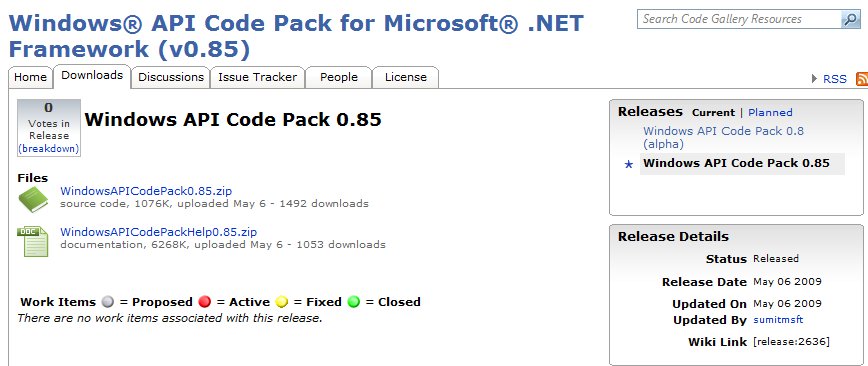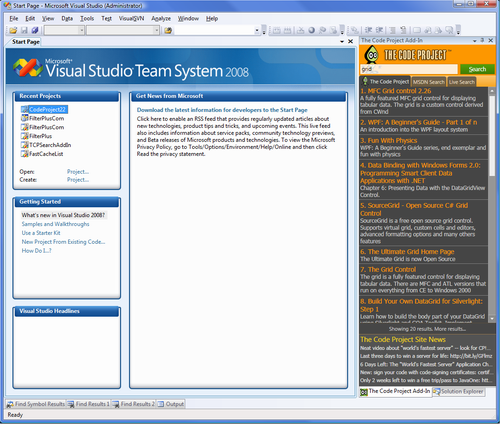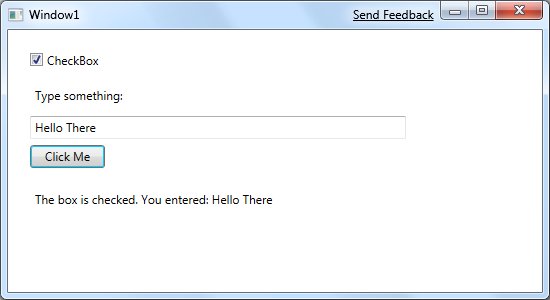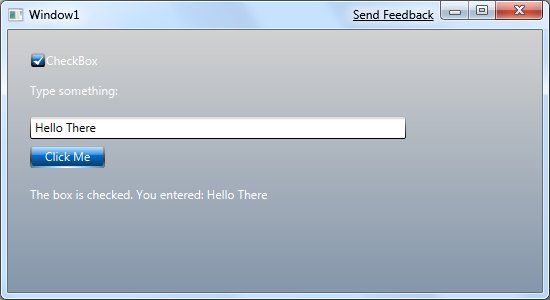 Friday, 08 May 2009
Some people have asked me about the purpose of Vista Bridge now that Code Pack (ok, Windows® API Code Pack for Microsoft® .NET Framework) exists. If you want to use a Vista feature (such as the power management API) you won't find them in Code Pack yet. Vista Bridge is not under active development right now, but you can download and use the wrappers to save time and effort whether you are targeting Windows 7 or Vista. If you run into issues using it on Windows 7, please let the team know using the Discussion tab.
The second question I am getting is about versions. Code Pack 0.8 (no longer available for download) was for build 7000. Code Pack 0.85 (the current version) is for the RC of Windows 7. If you have moved to the RC and something isn't working for you, go and get the latest version because there were a few breaking changes.
Will there be a new version for RTM? Let me just quote from the home page:
Please note that this library is currently a work-in-progress and this release is version 0.85 of this library. The final version of this library will be available around the time of the Windows 7 RTM release. Various features in the library could change between now and final release.
That's pretty transparent, I would say.
Update: 0.8 can still be downloaded. Go to the downloads page and there's a link over to the right. 
 Wednesday, 06 May 2009
I've made another appearance on DotNetRocks with Carl and Richard. Some links from the show:
And of course, the show itself. I dare you to listen at 1.4 or double speed.
Kate
 Monday, 04 May 2009
Sometimes little things make a big difference. Say you're reading through some code in Visual Studio and you come across a class or function you don't immediately recognize. It's interfering with your reading of the code, right? So you copy the name into your clipboard buffer, flip out to a browser, probably with Alt-Tab, then click for a new tab, type a URL like www.live.com or www.codeproject.com, wait while the page loads, paste your buffer into the search box, click search ... wow there are a lot of opportunities to be distracted in that process.
The CodeProject has a simple add-in for Visual Studio that lets you do your searches without going anywhere. It does one thing, and does it well.

Give it a try!
Kate
 Saturday, 02 May 2009
If you're starting to get interested in WPF, why not check out some of the videos over at WindowsClient.net? You can learn how to make a splash screen, use a datagrid, add validation to your application, deploy using ClickOnce, and much much more. Each video is only 10 or 15 minutes, but there are about a hundred of them. You're sure to learn something!
Kate
 Thursday, 30 April 2009
Inspired by the side by side approach of the "eye candy" article I linked to, here are two apps to compare:
 
Yes, they're the same app. The difference is a theme - one of the ones I posted about a while ago. I had to make four changes to this application to get this theme applied. I started by copying the appropriate XAML and DLL files (in this case, ShinyBlue.xaml and System.Windows.Controls.Theming.ShinyBlue.dll) into the project folder. Then I added the XAML into the project, and added references to the dll and also to WpfToolkit:

This lets me use dynamic resources from the theme. This particular theme doesn't have a default background brush, so I edited the XAML for my window to use the background brush in the theme:

For everything except the background (the colour of the button, the checkbox, the foreground text colour for the label and so on), it's just a matter of adding the ResourceDictionary in App1.XAML:

The various controls look good together - that's the work of the theme. This is a pretty simple way to make a dramatic difference in your application. If you didn't look at WPF themes yet, you really should.
Kate
 Tuesday, 28 April 2009
Design matters. I don't just mean software design, like what objects you'll have or what the interfaces will be or what database tables you'll use. I don't just mean planning before you code. I also mean visual design. I'll tell anyone who asks that I'm a grey-boxes-on-a-grey-background kind of girl, but that's mostly about my skills, not my aspirations. I can tell good looking from not so good looking, and I do get that being good looking makes a difference, at least for applications. 
I read an interesting article called In Defense of Eye Candy and it has some good examples - mostly oriented towards web sites, but not entirely - about making it clear that a button is a button, and about the tone and mood you set with your design decisions. Worth reading.
Kate
 Sunday, 26 April 2009
Gary Bertwhistle tells the story of the "yeah but" guy and encourages all of us to be "yeah and" guys instead. It's good advice. Years ago, I heard about the improv "yes and" rule. I discovered that, in both business and personal life, if you take a sentence with a but, and replace the but with and, the sentence becomes a much more positive and pleasant one. Your decision, your ruling, hasn't changed. The way you present it has. Sometimes instead of "and", I split the sentence at "but" into two sentences. Compare these:
- (To your child, about some iffy party or event they want to attend) I love you, but I'm not letting you go to that. I love you, and I'm not letting you go to that.
- I've thought about it a lot, but it's not going to happen. I've thought about it a lot, and it's not going to happen.
- It's a good idea, but I can't approve it. It's a good idea. I can't approve it.
- I know you really want to, but you can't. I know you really want to, and you can't.
Is it because people hear "but", know you're saying no, and stop listening? Is it because "but" somehow negates the "good" half of the sentence? I don't know. I do know I have less arguing in my life since I adopted this verbal habit.
Kate
 Friday, 24 April 2009
I like Scott Berkun's main blog and read it regularly. But now I'm also reading his new one that specifically covers public speaking. Lots of "how to fix" posts, and links to other tips and information. I was especially interested in the graph of heart rates falling as a lecture continued (in a university setting I believe) along with the recommendation to do something other than talk to folks every 20 minutes or less. Sounds like a good use for a demo!
Kate
© Copyright 2025 Kate Gregory
Theme design by Bryan Bell
newtelligence dasBlog 2.3.9074.18820   | Page rendered at Sunday, 21 December 2025 11:47:31 (Eastern Standard Time, UTC-05:00)
|
On this page....
Pluralsight Free Trial
Search
Navigation
Categories
Blogroll
Sign In
|